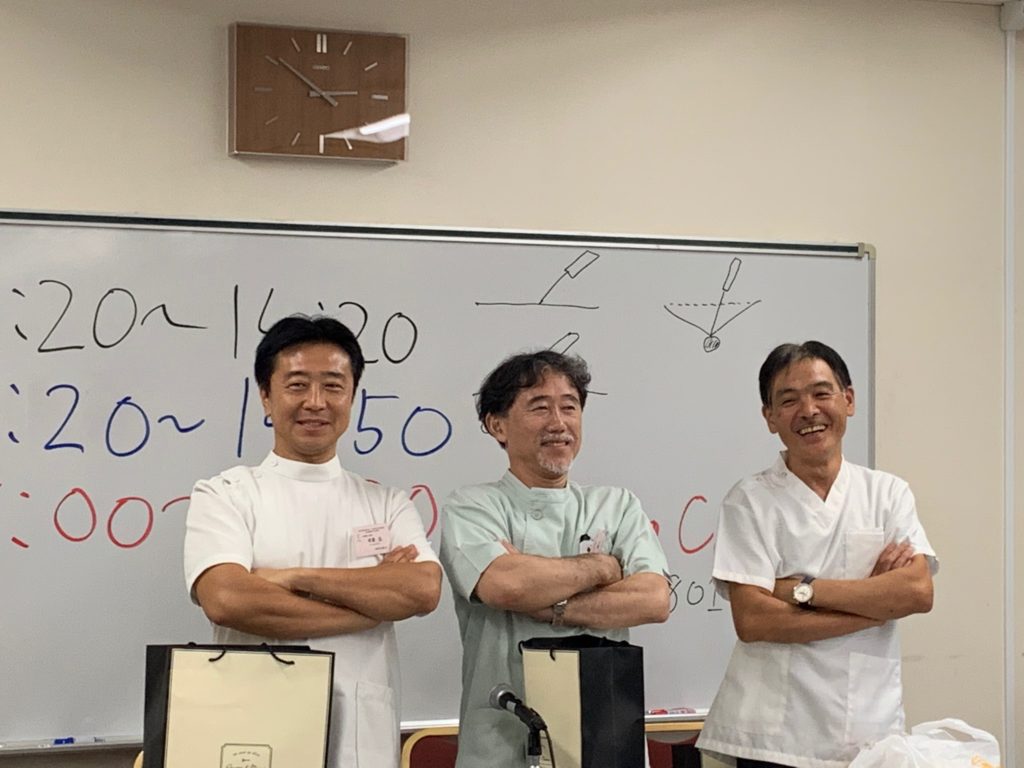The aim of a Toyohari treatment is to balance the yin and yang meridians so that the body can heal itself. This might sound quite simple, but in order to balance the meridians, it takes dedicated, ongoing commitment, extensive training and practice and high levels of awareness on behalf of the practitioner.
Each time I travel to Japan for Toyohari training, I feel a shift in the way the way I work. I always get so much out of the training and feel that my skills improve with each intensive training session.
In Toyohari we focus on treating the person, not the disease. We take the whole person into account and using the top three symptoms and the Four Diagnoses, we decide on the pattern of disharmony for that person in the present moment. For this reason, I often refer to Toyohari as present-time medicine.
As our view of the body-mind is based on the present moment, so is the condition of the body-mind. This view provides the space and freedom for healing to happen, as we are not locked into one particular diagnosis or condition. Fluid diagnosis and treatment protocols supports change and natural healing.

Shinoda Sensei, Nakazawa Sensei and Nagaoka Sensei 
Nakazawa Sensei, Imauji Sensei and Kunisada Sensei 
Ebana Sensei, Nakamura Sensei and Taniuchi Sensei
In Toyohari, our primary pattern of disharmony is based on the condition of four yin meridians: Lung, Spleen, Liver and Kidney. Diagnosis directly informs our treatment, so if a lung meridian diagnosis is made, then the lung meridian becomes the focus of our treatment.
Various symptoms of the body-mind correlate to specific meridians so symptom differentiation is an important part of our diagnosis. However, the main symptom may not directly indicate the primary pattern of disharmony. For example, although we may have a cold or cough, the liver or kidney meridian could be the primary pattern and the lung or spleen could be the secondary meridians involved.
The aim of a Toyohari treatment is to balance the yin and yang meridians so that the body can heal itself. This might sound quite simple, but in order to balance the meridians, it takes dedicated, ongoing commitment, extensive training and practice and high levels of awareness on behalf of the practitioner.
Our training focuses on the constant improvement of needling techniques, the use of non-insertive tools, as well as moxibustion techniques. We practice these techniques over and over again, receiving feedback from our teachers and other practitioners via the reading of the radial pulse on both wrists. Our teachers are highly skilled in being able to give corrections so that we can improve the various needling techniques. These are not like the needling techniques performed in Traditional Chinese Medicine, in which I am also trained. Toyohari techniques are highly sophisticated and refined and can change the pulse qualities with just one needle. This is why we perform needling on one acupuncture point and then read the pulse. We respond to the way the pulse changes with the needling of each successive point, so that the treatment process is dynamic, individual and highly responsive to the needs of each patient.
Another of the hallmarks of Toyohari practice is palpation (touch). We train in developing a high level of awareness and sensitivity to the condition of the meridians by touch. We do this by palpating the meridians, checking our findings with the pulse, and discussing our findings with our teachers and other practitioners to ensure accurate diagnosis.
This August, we trained in the way I have described above, focussing on improving our needling techniques and palpation skills. We also worked on improving our skills in using non-insertive tools, symptom control for certain musculoskeletal conditions, as well as improving our other diagnostic skills such as the association of symptoms with specific meridians.
I feel so fortunate to be part of a unique acupuncture lineage which emphasises continual skills improvement and refinement. This doesn’t happen in any other style of acupuncture. I feel enormous gratitude for the lineage of Toyohari teachers, for their generosity, kindness, compassion and support.

